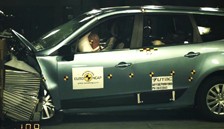The EU decision to make tyre pressure monitoring systems fully mandated by 2014 has prompted criticism from some UK car companies, the rationale behind which is that drivers should take responsibility for monitoring tyre pressures themselves.
Schrader Electronics, a European developer of tyre pressure monitoring systems, say that consumer research indicates that most drivers do not check tyre pressures or tread depths and that up to 80% of all cars on UK running on under or overinflated tyres.
“Car companies have commented that there has only been a tiny uptake of TPMS on new car models,” said Alfonso Di Pasquale of Schrader Electronics, “this is reminiscent of the ESP debate where again it was suggested that there had been a low uptake from customers. The reality is that dealers have not been explaining the safety benefits of ESP and this applies equally to TPMS.
“The increase in cost mentioned in a news report in the UK weekly motoring magazine Auto Express is frankly misleading; we anticipate that the cost to the motorist should be no more than 100 Euros per system and this will reduce with economies of scale,” continued Di Pasquale. “A suggestion in the same news item from the AA that a new sensor will have to be purchased if a tyre is replaced is equally incorrect and even if this were the case, experience from the United States – where TPMS has been standard on all cars since 1997 – has indicated that a replacement senor will cost around 20 Euros.”
While tyre pressure monitoring systems do not identify other problems such as worn tread, Schrader are working with Pirelli to design an ‘intelligent tyre’ that will monitor tread depth, as well as assessing skid potential on wet roads.
“The safety credentials for TPMS are well known, accepted and supported by the European Union together with other independent research and safety organisations. It has been proven that up to 3% of road accidents could be avoided if tyres were inflated to the correct levels, in addition, ensuring that tyre pressures are at the correct levels reduces emissions (up to 10% in some cases) and improves fuel consumption”.
For more on car safety, come to the Fleet News car safety section.





















Login to comment
Comments
No comments have been made yet.